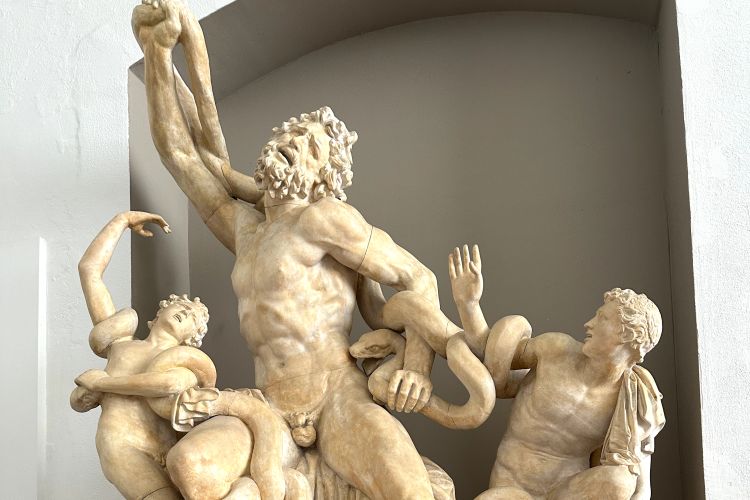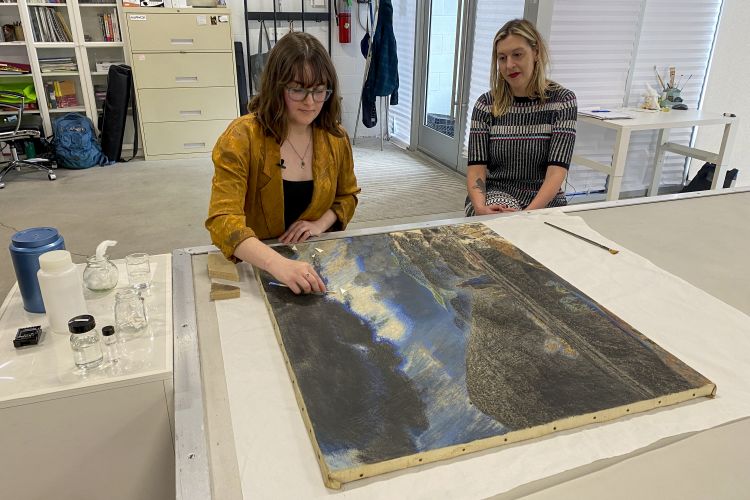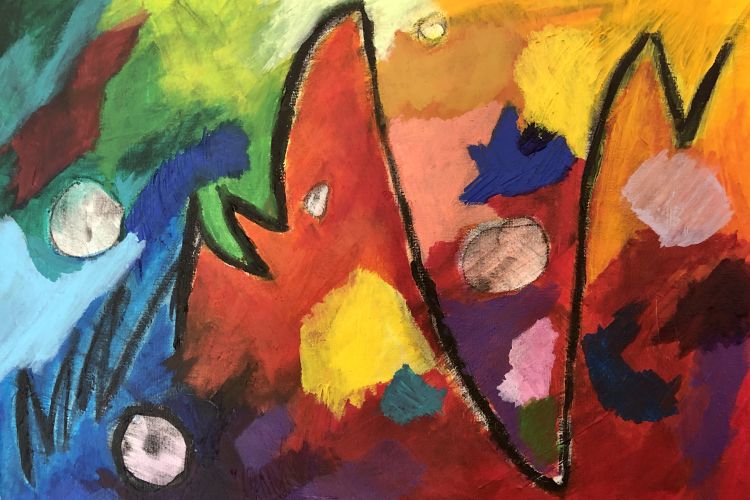STORIES FROM PAFA
Stuart Shils: Teaching Students to See
For Painting professor Stuart Shils (Cert. '82), artistry and vision are synonymous.
“There’s a reason you work from a model at PAFA. The reason we look at things is that this is the way to develop a visual life, not a conceptual verbal life, but a visual life,” he said. “How you work from a model is important, you can work from a model like you’re dead on your feet or you can be alive.”
The importance of sight was introduced to Shils by an uncle. He gave him a camera as a gift and taught the young Shils about photography and composition. He told his nephew that to be a good photographer, he needed to see.
“I was very intrigued by what it meant to learn to see because that didn’t really fit into the educational path I was exposed to in school,” he said. “I was a terrible student, I got terrible grades. I was a terrible student because I was on the seeing path and I couldn’t find the bridge to the thinking path.”
Photography was his first love, but Shils first saw what art could really be in an art history class while in college in New Jersey.
“I had a really great teacher and we could take the train into Manhattan to go to the Met and MOMA to write papers, and I fell in love with looking at images,” he said.
And a few years later, Shils’ eyes were opened to the work being done at PAFA.
“I stumbled into the ASE and I was blown away by what I saw. I really knew nothing about contemporary art, I only knew what I had studied in classrooms,” he said. “I was totally knocked out by the atmosphere and high seriousness. It was like walking into something palpable, that show.”
Shils then spent several years studying at PAFA, learning to see and honing his work, but he said the real growth for an artist comes after school ends.
“School is a journey but that is one part of the journey,” he said. “The next part is that period of dormant germination, like where the snow is on the ground and the seeds are underneath and the ground is really warm down there. You might not see the changes but they’re happening. It’s the process of being in renewal.”
Now Shils is leading classes instead of taking them at PAFA.
“I guide them in a way that might not be called a good influence because I’m not gonna tell students what they’re going to hear others.”
Shils says the art world has made so many changes since he was beginning his career. It was nearly ten years before Shils showed his work after graduation and he sees his students diving into exhibitions while they are still studying.
He encourages his pupils to take a beat and develop themselves in the studio before exposing themselves to the underbelly of art.
“The world has changed. We used to understand that upon leaving school, you simply hung out and did your work. You sharpen an instrument slowly; you don’t know how long it’s going to be until it sounds like something,” he said. “You just go home and work, you go to your studio whatever that means. Of course, you have to have a job to survive but this whole idea of chasing after the art world and recognition and ‘Look what I’m doing,’ no, no, no.”
He discourages young artists from taking in the opinions of art dealers and gallerists when their career is beginning. Shils says it’s better to look at your own community for advice and support.
“The scene of do-it-yourself and co-ops, that’s something else entirely, that’s a beautiful scene that’s particularly flourishing here,” Shils said. “These are young artists who are taking their lives into their hands and Philadelphia is a center for this. They’re not waiting for a dealer with their feet on the table to come and show them the way, they’re doing it themselves.”
Shils points to artist collectives like AUTOMAT, founded by PAFA alumni, as an example of Philadelphia’s ability to foster young talent outside of the art mainstream.
“I’m totally supportive of the idea of building community with your friends because that is what will carry you, that is what it’s about,” he said. “It’s not about pushing yourself to get in here or do this or sell. My idea is to build community with your friends and give yourself as much time as possible.”





